Introduction
Information is perhaps the greatest weapon in any war. Staying one step ahead of the opponent is at often times crucial in securing victory. People, organizations, and countries will go to great lengths to secure sensitive intelligence because lives and success hangs by a thread.
In this article, we will be examining the history of cryptography and cryptanalysis and the important role it played in World War II.
Origins
Cryptology derives from the Greek kryptós meaning “hidden secret” and logia, which means “to study”. It is used to secure a range of information, though, in modern times, we more associate cryptology with computer science and high-tech security systems.
However, before its modern definition, cryptography/cryptology was synonymous with “encryption”. When we think of encryption, there’s a good chance that most people imagine a piece of paper littered with strange symbols or nonsense words. Someone would then have a “key”, which would be the only (apparent) way to decode the document/information.
16th-century book-shaped French cipher machine, with arms of Henri II of France. By Uploadalt
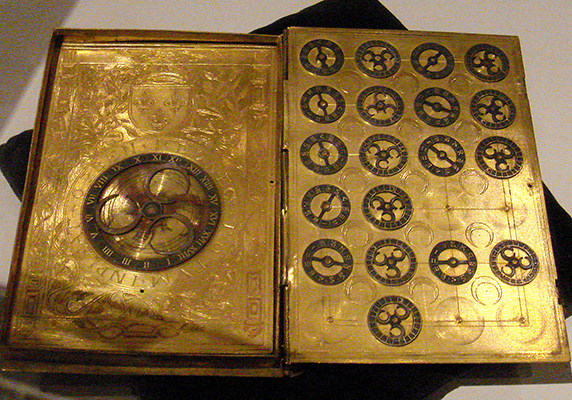
Originally, cryptography was focused on message confidentiality. You would send text to someone (spies, military units, diplomats) that appeared unreadable to anyone without knowledge of the key. Long ago, this needed to be nothing more than writing itself, because few people knew how to read.
The Greeks were said to have used ciphers, particularly the Spartan military. Steganography—hiding the fact messages exist—was also developed in ancient times. One of the first cases was a message tattooed on a slave’s shaved head. The hair would regrow and hide the message.
Enciphered letter from Gabriel de Luetz d’Aramon, French Ambassador to the Ottoman Empire, after 1546, with partial decipherment. By Uploadalt
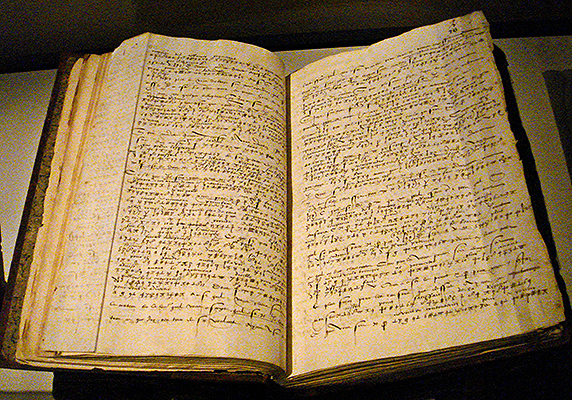
There were also early physical devices used with ciphers. The scytale of ancient Greece, which was a rod supposedly used by the Spartans to help decode texts. Later on, in medieval times, there was the cipher grille. This method worked by encrypting a plaintext by writing it onto a sheet of paper through a pierced sheet (of paper or cardboard or similar).
The Enigma
When World War I came around and computers became involved in encryption, methods became increasingly complex. These newer methods relied on mathematical theory and computer science. These algorithms were based around the computational hardness assumption—basically, how difficult would be to break. What this means is that it becomes near-impossible to crack a code by any known means.
One of the most famous examples is the Enigma machine used by the German government and military from the late 1920s and during World War II. The machine was invented by German engineer Arthur Scherbius at the end of World War I. During World War II, the Enigma machines were used mainly by Axis Powers.
German Lorenz cipher machine, used in World War II to encrypt very-high-level general staff messages. By Matt Crypto
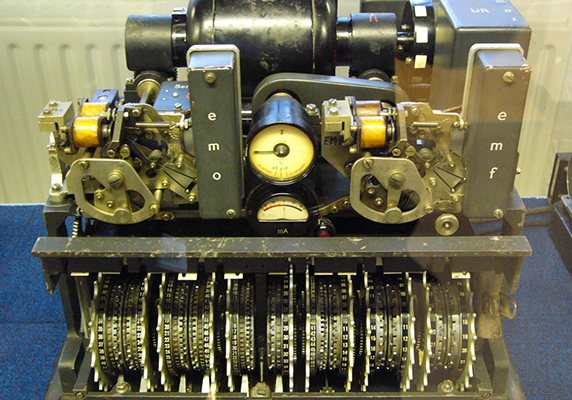
The Enigma had been broken previously by three Polish cryptologists, Marian Rejewski, Jerzy Różycki and Henryk Zygalski who were working for Polish military intelligence. Later on, in the midst of World War II, the German Enigma and Lorenz ciphers were considered to be the biggest secret communications. Bletchley Park, in Milton Keynes, Buckinghamshire, acted as the central site of the United Kingdom’s Government Code and Cypher School (GC&CS) and would regularly penetrate secret communications of Axis Powers.
Commander Alistair Denniston was the operational head of this department from 1919 to 1942. His team was moved to Bletchley Park, and he brought a varied crew with him featuring linguists, chess champions, and crossword experts.
Poznań monument (center) to Polish cryptologists. By Ziko

When Britain declared war on Germany, Denniston wrote to the Foreign Office asking to recruit “men of the professor type”. They would recruit men from the universities of Cambridge and Oxford, as well as “trustworthy” women for clerical and administrative jobs. They even ran a crossword competition in The Daily Telegraph. Those who showed promise were discretely contacted for “a particular type of work as a contribution to the war effort”.
One of Bletchley Park’s most famous employees was Alan Turing. He led Hut 8, the section responsible for German Naval cryptanalysis. During his time, he devised a number of techniques to break German ciphers after Bletchley came into possession of a German Enigma.
Turing also improved the pre-war Polish bombe method, which was an electromechanical machine that could find settings for the Enigma machine. He played a pivotal role in cracking intercepted coded messages that enabled the Allies to defeat the Nazis in many crucial engagements, including the Battle of the Atlantic.
Hut 4, adjacent to the mansion, is now a bar and restaurant for the museum. By Cnyborg
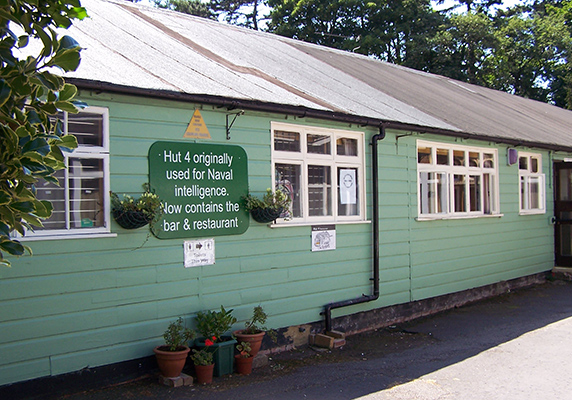
In January, 1945, which was the peak of the team’s codebreaking efforts, there were around 9,000 people working at Bletchley Park. The workload was intense, and often times tedious. Staff had one week’s leave, four times a year, though some women reportedly collapsed on the job.
It seemed cracking the German Enigma and Lorenz ciphers were, as you can imagine, rather stressful. But they should have been virtually unbreakable. However, what you will discover with most any work, human error plays an often large and defining factor—“Loose lips sink ships”. Flaws in German cryptographic procedures, and poor disciplinary practices by personnel created critical vulnerabilities. This slither of error was all that the Bletchley Park team needed. If German forces had been aware of these attacks, their problems could have been easily remedied.
The intelligence Bletchley intercepted and decoded was classified as “Ultra secret”, going above the highest classification at the time, “Most secret”. As you can imagine, their mission was a closely guarded operation.
A complete and working replica of a bombe at the National Codes Centre at Bletchley Park. By Matt Crypto
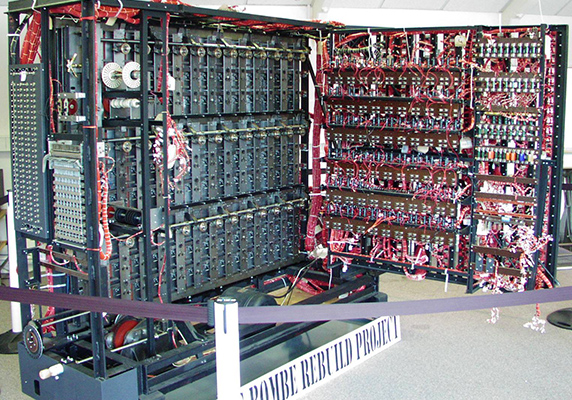
The staff signed the Official Secrets Act (1939). In 1942, a security warning further emphasized the vital nature of their work: “Do not talk at meals. Do not talk in the transport. Do not talk travelling. Do not talk in the billet. Do not talk by your own fireside. Be careful even in your Hut ...”
Bletchley Park covered numerous Axis Powers, and included different huts to process different sources of information. There was intelligence reporting, as well as listening stations that dealt with German, Italian, Soviet, and Japanese signals.
The official historian of World War II British intelligence has written that, thanks to Bletchley Park’s work, the war was shortened by two to four years, and that without their effort, the outcome of the war could have been rather uncertain.
Years later, Bletchley Park is now an educational and historical attraction that memorializes and celebrates their accomplishments.